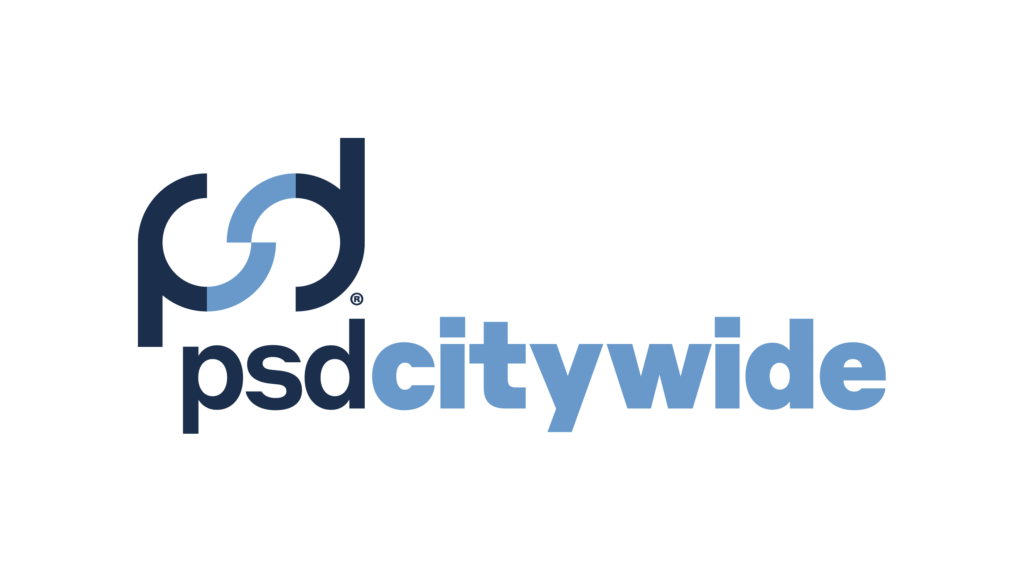Infrastructure is an integral part of everything we do, every day of our lives. In our homes, good infrastructure provides us with clean and healthy water to drink. In our communities, good infrastructure provides us with safe sidewalks to walk our kids to school and high-quality community centres to connect with our neighbours. In our commutes, good infrastructure provides modern, accessible buses and high-quality roadways to get us to and from work faster and more comfortably – meaning ultimately, we will have more quality time with our families.
The Government of Canada has designed the Investing in Canada plan to support the kinds of projects that will contribute to healthy, liveable, and sustainable communities while also supporting the economy and creating jobs. The Investing in Canada plan is delivering unprecedented infrastructure investments for communities of all sizes across the country – big and small. Under the Plan, we are providing more than $180 billion in infrastructure investments across the country to achieve three main goals: help grow our economy; build inclusive communities; and support low carbon green economies.
Since the launch of the Plan in 2016, the 14 federal departments and agencies involved in its delivery have approved more than 32,000 infrastructure projects, nearly all of which are underway. These projects are helping to upgrade our water systems so that we have cleaner and safer drinking water. They’re expanding our public transit networks so that we can connect people to jobs and improve our air quality. They’re modernizing our ports and airports to give businesses more ways to get their products to market. They’re building new parks, swimming pools, and hiking trails to allow Canadians to stay fit and connect with their friends and neighbors, and they’re offering more affordable housing and child care to give families the support they need to thrive.
As the department responsible for coordinating the Investing in Canada plan, Infrastructure Canada alone has approved more than 4,400 projects across the country under the Plan, representing over $18 billion worth in federal funding.
Canada Infrastructure Needs
The demand for new infrastructure has outpaced investment and our Plan will help address this infrastructure gap.
To better understand Canada’s infrastructure gap and the country’s infrastructure investment needs, a collective of national industry and municipal associations initiated the Canadian Infrastructure Report Card, a voluntary survey of municipally-owned public infrastructure assets. The Report Card collected data from 120 municipalities, primarily large urban centres, representing just over 50 percent of Canada’s population.
The information collected for the report card helped form the development of Canada’s first-ever Core Public Infrastructure survey. Developed by Statistics Canada and Infrastructure Canada, the purpose of the CCPI is to better understand the state of public infrastructure in Canada.
The CCPI covers nine main asset classes: roads; bridges and tunnels; potable water; wastewater; storm water; public transit; solid waste; cultural, recreational and sports facilities; and public, social and affordable housing. In total, 237 questions were asked to more than 1,500 respondents.
The data gathered is helping to establish a comprehensive, national baseline picture of the stock, condition, and performance of Canada’s core public infrastructure assets. This information fills a long-standing data gap and now, the results of the survey will help all orders of governments take a more evidence and results-based approach to infrastructure policies, programs and investments.
The Investing in Canada Plan’s Progress so Far
Provinces, territories, and communities own 98 percent of public infrastructure in Canada; local leaders know the needs of their communities. When we developed the Plan, we focused on areas of investment that our provincial, territorial, municipal, and Indigenous partners identified as priorities: public transit; green infrastructure; social infrastructure; trade and transportation; and rural and northern infrastructure. We worked with our partners to make the Plan flexible and responsive to their needs. Our programs have also been designed to provide the predictable funding our partners need to invest in longer-term, transformational projects.
We have made significant progress in delivering infrastructure investments under our Plan over two years. Exciting work is underway from coast to coast to coast, and projects that may not have been realized before now have the support they need to move forward.
The first phase of our plan made $14.4 billion in new funding available for critical repair and modernization of key infrastructure. This funding has been invested in upgrades to public transit systems, clean water and wastewater systems, and affordable housing. Communities like Carcross, Yukon are expanding and improving their cultural infrastructure to provide members with a place to share their heritage and culture. Communities such as Stanley, New Brunswick are making key upgrades to wastewater systems to ensure the community remains healthy and liveable. Communities like Pigeon Lake, Alberta are investing in green infrastructure to protect the health and safety of residents and the surrounding environment.
We’ve helped purchase over 3,000 new buses and rehabilitated or enhanced more than 3,700 others in communities across the country. We have helped fund 200 new light-rail vehicles and refurbished more than 370 existing subway or rail cars. We’ve also supported the new construction or refurbishment of more than 1,400 clean water and wastewater projects. All of this work is geared towards laying the foundation for the next phase of the Plan.
The next phase is well underway and is building on the progress we’ve already had, investing $81.2 billion in projects that will transform our communities, such as major light rail networks. Our plan funds better transportation and digital infrastructure for people living in remote communities. It will support projects that will reduce greenhouse gas emissions, and provide cleaner air and water for Canadians across the country.
As part of the Investing in Canada plan, the Government of Canada also launched the Disaster Mitigation and Adaptation Fund (DMAF). This national, competitive, merit-based program will invest $2 billion to support large-scale infrastructure projects, such as wetlands, dams, and dikes, to better protect our communities against future natural disasters and help reduce the impacts of climate change. Now more than ever, communities are being impacted by natural disasters, such as floods, wildfires, and winter storms. Through DMAF, communities will be able to strengthen their resilience to current and future risks while ensuring the continuity of essential services.
Canada Infrastructure Bank
In a country as vast as ours, public investment alone cannot meet the sizeable infrastructure need that exists without placing an unsustainable burden on taxpayers. Partnering with the private sector is one way for the public sector to build more infrastructure that benefits Canadians.
This is why we created the Canada Infrastructure Bank (CIB), which is one of the innovative ways we are investing in infrastructure through the Investing in Canada plan. It has a mandate to increase the participation of private sector investors in transformative, revenue-generating infrastructure projects that will benefit Canadians and help public dollars go further.
The Canada Infrastructure Bank can work with provinces, territories, municipalities and Indigenous communities to help meet their infrastructure needs, whether it’s providing advice to governments and sponsors, structuring and investing in projects, or contributing to evidence-based decision making through its data and information role as part of its centre of excellence.
Through its investment role, by crowding-in private investments, the Canada Infrastructure Bank is freeing up government resources for other infrastructure priorities. It brings private-sector investors and the public sector together to negotiate and structure investments for revenue-generating infrastructure projects, where funding of the infrastructure is born all or in part by beneficiaries and users, such as in public transit, trade and transportation, and green infrastructure priority sectors where this model holds most promise.
Since opening its doors in 2017, the Bank has been hard at work engaging private and institutional investors, and recently announced its $1.28-billion investment in the Réseau express métropolitain (REM) in Montréal. When complete, this 26-station, 67-kilometer-long light rail network will be the fourth-largest automated transportation system in the world, making it easier for Montrealers and visitors alike to move within the City.
New partnerships between governments and the private sector will get more infrastructure built, creating more opportunities for all Canadians to participate fully in the life of the nation and share in its prosperity.
Smart Cities Challenge
When we launched our Plan, we committed to making investments in infrastructure in new and innovative ways. The CIB is one such innovative approach, the Smart Cities Challenge is another.
The Smart Cities Challenge is a national competition that encourages communities of all sizes to find innovative solutions that use data and connected technology to improve the quality of life of their residents.
Communities across Canada – small and large, urban, rural, northern, and Indigenous – got on board with the Challenge. The response from across Canada was incredible, with 130 submissions from over 200 communities, all looking to solve important issues – from addressing poverty, to tackling the myriad of challenges facing young people, to living a healthier more active life.
The Challenge encourages risk-taking and thinking outside the box to build better communities and solve the common problems so many communities share. Communities lead the way on deciding what problems they want to address. We are getting behind the big ideas that will solve these problems. The investment in the winning communities will have a multiplier effect as we apply these innovations to communities across the country that face similar issues.
The solutions can come from various sectors – private sector, public sector, not-for-profit and the research community. We are encouraging multi-sectoral partnerships that push the limits of traditional thinking. Communities are already reporting successes in new partnership development.
A transformation is underway. Communities are collaborating and sharing experiences with a goal to create thriving communities of the future. Internationally, the Challenge is also gaining momentum. From across the globe, organizations with solutions or experiences to share are connecting with Canadian communities to work together. The conversation is growing.
We look forward to announcing the winning communities in Spring 2019.
What’s Next? Looking Forward
It is crucial that our infrastructure keep up with the needs of Canadians. The ways we work, move, and communicate are evolving. Every day our world becomes more digital and interconnected. International trade grows while climate change presents new challenges. We need to continue to innovate and find ways to build a cleaner economy that relies on green, renewable, and adaptive technology, and that opens up new opportunities for us to do business, learn, trade, and innovate.
All orders of government have a role to play in building strong, sustainable communities, so let’s seize the opportunities at hand. Let’s remain ambitious in our goals. And let us all come together to build infrastructure for now and the future.
THE HONOURABLE FRANÇOIS-PHILIPPE CHAMPAGNE was elected the Member of Parliament for Saint-Maurice—Champlain on October 19, 2015. Businessman, lawyer and international trade specialist, Minister Champagne has more than 20 years of experience in large international companies, particularly in the fields of energy, engineering, and innovation. He was Vice-President and Senior Counsel of ABB Group, a leader in cutting-edge technology that operates in more than 100 countries. Later, he served as Strategic Development Director, acting General Counsel, and Chief Ethics Officer and Member of the Group Management Committee of AMEC, a world leader in the energy sector. Minister Champagne served as a parliamentary secretary from 2015 until 2017, when he was appointed Minister of International Trade. He currently serves as Minister of Infrastructure and Communities.



